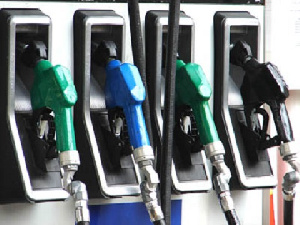The Institute for Energy (IES) is predicting about 2.5 percent reduction in fuel prices on the local market in the first pricing window next month.
According to the IES, the next window may be a good time for consumers who have been battered with rising fuel prices over the past months.
The IES attributed the expected decline in fuel prices on the local market to the outbreak of deadly coronavirus in China, which has resulted in less demand for crude oil and for products made from crude oil such as jet fuel because of travel restrictions as well as stability of the Ghanaian cedi against the US dollar.
“The outbreak of the novel coronavirus comes at a particularly bad time for oil prices, which were already under duress from a global supply glut.
“The reduced economic activity in China means less demand for crude oil and for products made from crude oil such as jet fuel because of travel restrictions. Brent crude traded around 3 percent lower on Monday at US$58.88 a barrel, the lowest level since October last year. Brent crude decreased marginally by 4.66 percent from US$66.74 per barrel to close at US$63.63 per barrel on average terms during the period under review,” Raymond Nuworkpor, Research & Policy Analyst with IES said in a statement.
Below is the IES’ full statement
LOCAL FUEL PRICES MUST FALL FOR CONSUMERS REVIEW OF JANUARY 2020 SECOND PRICING-WINDOW
Local Fuel Market Performance
Fuel prices experienced an increment in the Pricing-window under review as predicted by the Institute for Energy Security (IES). The Second Pricing-window of January 2020 saw majority of Oil Marketing Companies (OMCs) adjusting prices at the pump to record a national average price of Gh¢5.48 and Gh¢5.46 for Gasoil and Gasoline respectively. This represents an average of 2.24% and 1.87% increment for Gasoil and Gasoline respectively.
For the Pricing-window under review, Zen Petroleum, Benab Oil, Pacific, SO Energy and Alinco Oil sold the least-priced Gasoline and Gasoil on the local market relative to others in the industry, while Shell sold the most expensive Gasoil and Gasoline; as found by IES Market-scan.
World Oil Market
The outbreak of the novel coronavirus comes at a particularly bad time for oil prices, which were already under duress from a global supply glut.
The reduced economic activity in China means less demand for crude oil and for products made from crude oil, such as Jet fuel, because of travel restrictions. Brent crude traded around 3% lower on Monday at $58.88 a barrel, the lowest level since October last year. Brent crude decreased marginally by 4.66% from $66.74 per barrel to close at $63.63 per barrel on average terms during the period under review.
S&P’s Platts benchmark for fuels shows average Gasoline price decreasing by 5.69% to close at $587.68 per metric tonne, from a previous average of $623.13 per metric tonne; while Gasoil declined by 8.00% to close trading at $562.93 per metric tonne.
Local Forex
Data collated by IES Economic Desk from the Foreign Exchange market shows the Cedi remained stable against the U.S. Dollar, trading at an average price of Gh¢5.62 to the U.S. Dollar over the period under review; same rate of Gh¢5.62 recorded in the first Pricing-window.
PROJECTIONS FOR FEBRUARY 2020 FIRST PRICING-WINDOW
From the 4.66% decline in prices of Brent crude, coupled with the 8.00% and 5.69% considerable reduction in the prices of Gasoil and Gasoline respectively on the international market; the Institute for Energy Security (IES) foresees prices of fuel on the local market dropping by roughly 2.5%.
The expected fall of fuel prices for consumers is a reflection of market fundamentals as accepted in a deregulated market structure.
The next Window may be a good time for consumers who have been battered with rising fuel prices over the past months.
Signed:
Raymond Nuworkpor
Research & Policy Analyst, IES















